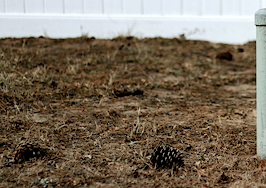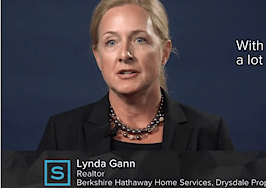As all first-time buyers quickly discover, the cost of homeownership is more than a down payment, monthly mortgage, insurance and utilities — it’s also paying for the maintenance services that keep your home running smoothly every day.
Personal finance site Bankrate.com recently crunched some numbers and found that homeowners, on average, spend $2,000 per year on home maintenance, which includes landscaping, housekeeping and plumbing services.
Furthermore, 63 percent of homeowners use at least one recurring home maintenance provider, and another 35 percent use at least two.
Homeowners tend to spend the most on housekeeping ($285 per month), followed by homeowners association (HOA) dues ($210 per month) and landscaping ($144 per month). The next most popular services were home security systems ($130), pool care ($123), snow removal ($84), septic service ($67) and trash and recycling collection ($55).
In addition to home maintenance costs, Bankrate says homeowners need to be prepared to pay for major repairs, such as a blown-out air conditioner or a leaky roof, and they need to put aside about $275 each month to cover the property taxes for a median-priced home ($250,000).
Saving over convenience
Although paying for landscapers and housekeepers is convenient and frees up your daily schedule, Bankrate says it’s not a smart move if your savings account is low.
“If you don’t have a fully funded emergency fund comprising three to six months’ worth of expenses in a high-yield savings account, strongly consider suspending as many as these services as possible until you do,” read the report.
“Dropping almost $300 a month on housekeeping while lacking $1,000 in the bank is simply too risky. What if the roof caves in?”
Illumint CEO Kevin Mahoney told Bankrate building a “home maintenance fund” alongside regular savings is relatively easy — set aside an extra $100–$200 per month to avoid using credit cards or short-term loans when something goes awry.
Another study by Zillow estimates annual “hidden” homeownership expenses are actually closer to $9,000, which breaks down to $757 per month. Those expenses include avoidable (professional home services) and unavoidable (property taxes and utility bills) costs.
The Zillow study suggests agents help buyers make better short-term and long-term housing decisions by factoring in both cost categories when deciding whether or not they can afford a home.
Agents should steer their clients toward homes they can comfortably pay for even if those homes have a smaller yard, less square footage or are missing some of those “wow” amenities.
Lastly, agents can provide advice on cost-saving measures, such as installing solar panels, utilitizing smart home technologies and installing energy efficient appliances.






